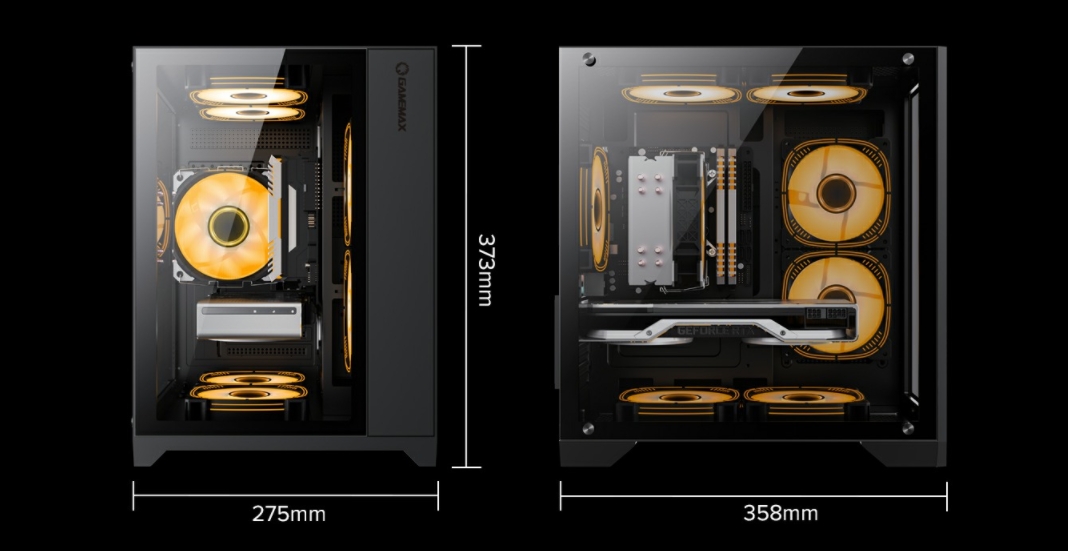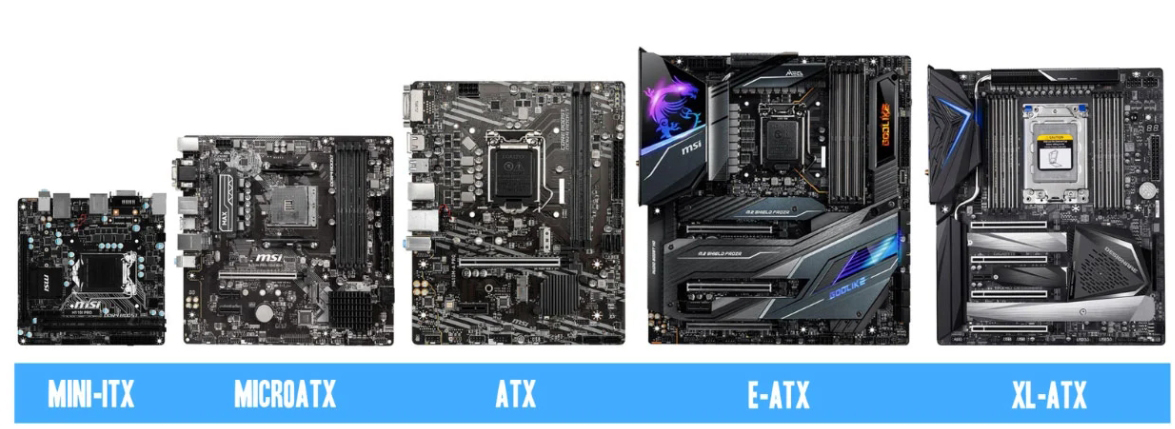When building or upgrading a computer, one of the most crucial decisions you'll make is selecting the right PC case size. The case not only houses your components but also affects cooling, airflow, and overall aesthetics. This guide will help you understand the different computer case sizes, motherboard form factors, and how to choose the right size for your needs.

A computer case is the enclosure that protects and organizes the computer's components, including:
Motherboard: The main circuit board that connects all components.
Power Supply: Provides power to the system.
Storage Drives: Hard drives and SSDs for data storage.
Cooling Systems: Fans and liquid cooling setups to maintain optimal temperatures.
A good case ensures protection from dust and damage, provides efficient cooling, and allows for effective cable management.

The size of your PC case is largely determined by the form factor of your motherboard. The most common motherboard sizes are:
ATX (Advanced Technology eXtended):
Size: 305mm x 244mm
Offers multiple expansion slots and connectors, suitable for most builds.
Micro-ATX:
Size: 244mm x 244mm
Smaller than ATX, with fewer expansion slots. Great for budget builds.
Mini-ITX:
Size: 170mm x 170mm
Designed for compact builds, like home theater PCs (HTPCs).
E-ATX (Extended ATX):
Size: 305mm x 330mm
Larger than ATX, ideal for high-end systems with more features.
Choosing the right motherboard size is crucial, as it will dictate the case size you need.

PC cases come in several types, each catering to different needs:
Full Tower:
Size: Usually above 600mm in height.
Supports E-ATX motherboards, multiple GPUs, and extensive cooling options.
Ideal for high-end gaming rigs and workstations.
Mid Tower:
Size: Typically between 400mm and 600mm in height.
Fits standard ATX and Micro-ATX motherboards.
Offers a good balance of size and expandability, suitable for most users.
Mini Tower:
Size: Around 300mm to 400mm in height.
Supports Micro-ATX and Mini-ITX motherboards.
Good for basic builds but may limit future upgrades.
Small Form Factor (SFF):
Designed for compact builds, typically using Mini-ITX motherboards.
Ideal for users with limited space but may restrict component choices.
All-in-One Cases:
Integrate peripherals, such as a monitor, into the case.
Simplifies setup but may reduce flexibility.
When deciding between a mid tower and a full tower case, consider these factors:
Size and Space: If desk space is limited, a mid tower may be better. Full towers require more room.
Component Compatibility: Full towers accommodate larger components, making them suitable for powerful setups. If you plan to use multiple GPUs or larger cooling solutions, a full tower may be necessary.
Cooling Options: Full tower cases generally offer better cooling solutions due to more space for fans and radiators.
Future Upgrades: If you want the option to upgrade components later, full towers provide more flexibility.
Choose Your Motherboard: Decide on a motherboard based on your needs. Ensure you consider its form factor (ATX, Micro-ATX, or Mini-ITX).
Evaluate Your Components: List all components you plan to use, such as graphics cards, CPU coolers, and storage devices. Check their dimensions for compatibility with your chosen case.
Consider Future Needs: If you plan to upgrade or add components later, opt for a case that allows for expansion.
Measure Available Space: Measure the area where you plan to place your PC case to ensure it fits comfortably.
Check Specifications: Most manufacturers provide detailed specs for their cases, including maximum GPU length and CPU cooler height. Always review these to ensure compatibility.
Choosing the right PC case size is essential for building a computer that meets your needs while fitting seamlessly into your workspace. By understanding the different motherboard form factors and PC case types, you can make an informed decision that balances space, cooling, and expandability. Whether you are a beginner or an experienced builder, knowing how to select the right case will enhance your computing experience for years to come.